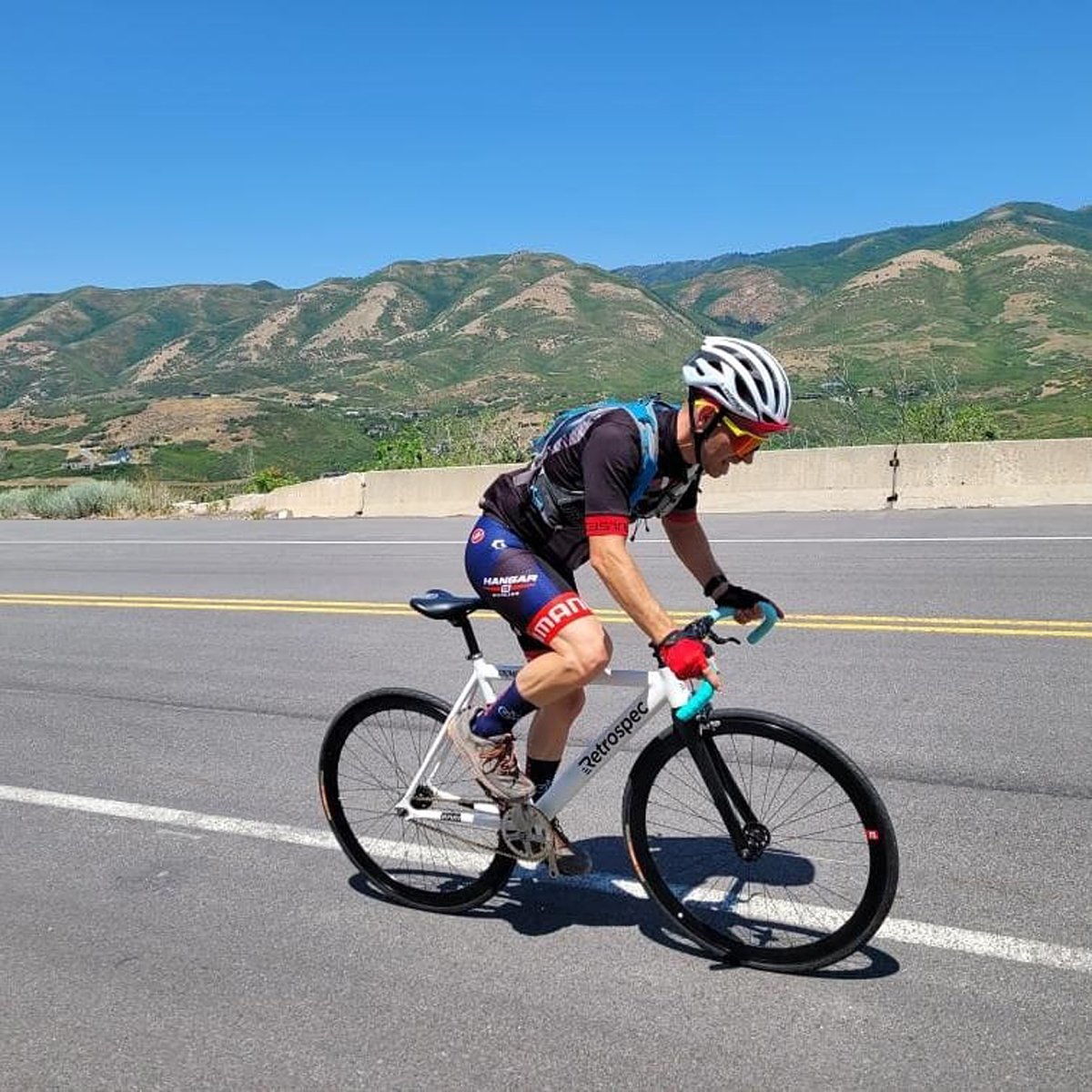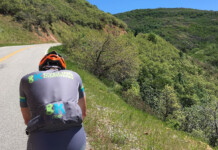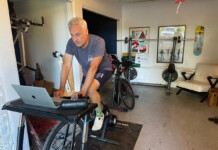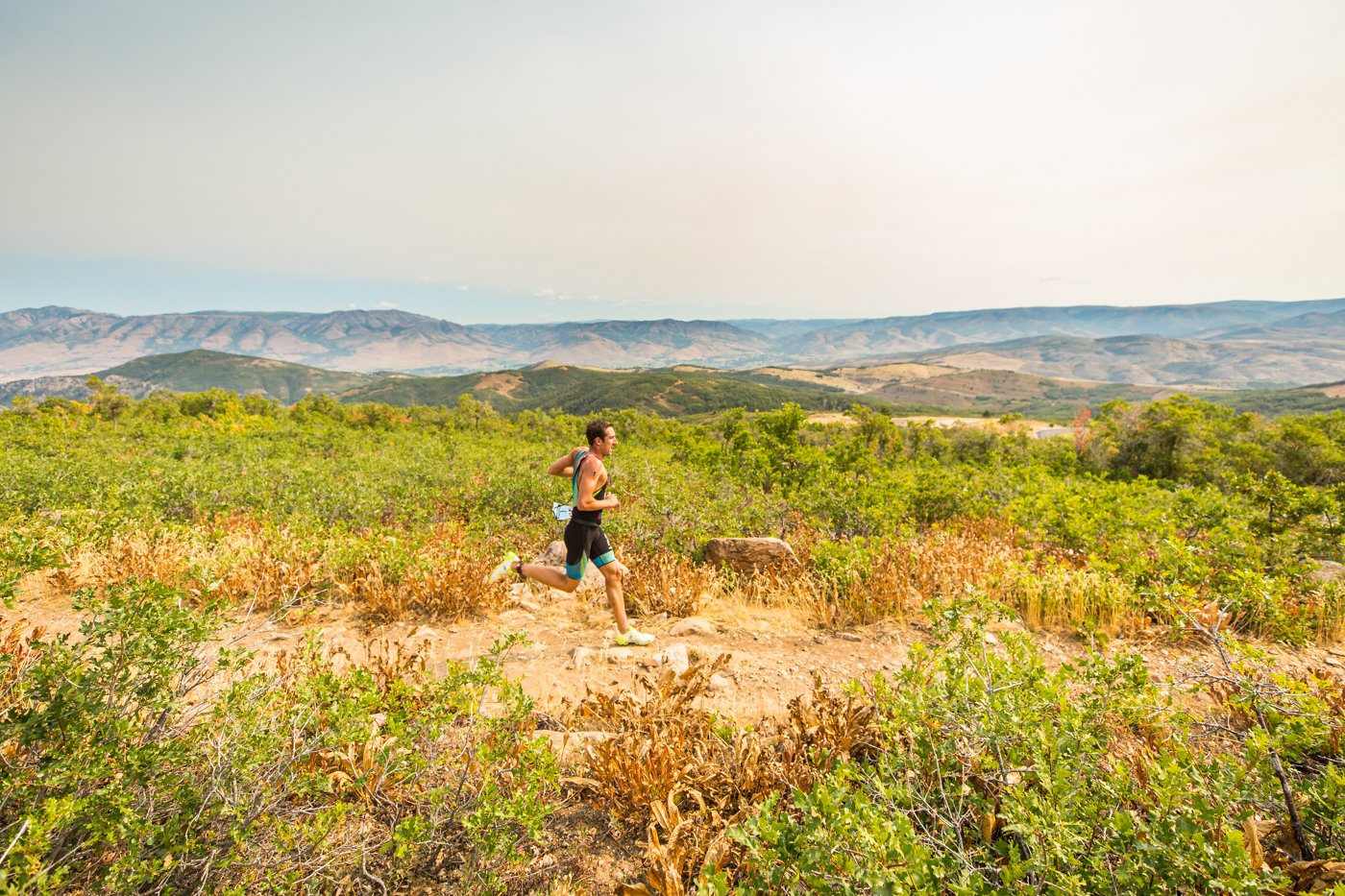By Anthony J. Nocella II, Ph.D. — A year ago I bought a track bicycle, also known as a “fixed-gear” or “fixed-wheel”. A fixed-gear is a single speed bicycle, often with no brakes, which has a cog threaded directly to the rear hub. Because of the direct connection, you cannot coast when riding fixed. When the crank moves backward or forward the back wheel moves backward and forward too.
People that ride fixed-gears on the road get them for a variety of reasons. Fixed-gears are easy to maintain since they don’t have shifters and derailleurs; they are easy to lock up and relatively affordable. Fixed-gears are also a favorite of many urban hipsters (who call them “fixies”), inspired by the bike messenger/courier culture or the movie Quicksilver (a 1986 film starring Kevin Bacon, Jami Gertz, and Laurence Fishburne).

Every summer, I’d see a few people including my friend, the late Louis Holian, ride their fixed-gears up and down some of the canyons here in the Wasatch Mountains. I decided I wanted to do the same.
Mike Hanseen, the manager of Hangar 15 Bicycles in Millcreek, Utah, was another influence. It was Mike who told me that fixed-gears can be an excellent training tool for bike riders. Soon, I was building my balance, smoothing out my pedal stroke, and just becoming a stronger and efficient cyclist. I wish I did this when I was competing, instead of always riding rollers.
I decided to interview Mike Hanseen why fixed-gears can be important in training for a competitive cyclist.
Anthony: Mike, tell me how you got into riding fixed-gear bicycles.
Mike: I got into fixed-gears for my training as a cyclist. I found out of ignorance that I got stronger quicker when I rode my fixed-gear more. I also was a bike courier in downtown Salt Lake City, but honestly didn’t ride my fixed-gear as a courier much due to safety.
Anthony: Does riding the canyons or long road rides on a fixed-gear help in training for cycling?
Mike: Fixed-gears are beneficial training tool for any cycling discipline. This is because the muscle groups work overtime: they are constantly working to control the speed of the bike, both in acceleration and deceleration. You can’t just stop pedaling to slow down or stop. On a fixed-gear, the rider controls the speed of the bike with their legs. The pedals are always in motion because they are “fixed” to the drivetrain. There is a slight (controlling speed) to an extreme (stopping) reverse pedaling motion with the legs while the pedals are still moving forward.
When descending a canyon on a regular bike, the rider can simply coast and use their brakes to control their speed. On a fixed-gear, a rider must use their legs to control speed. Not only are they using their legs to control speed, but they are using them opposite of how one would normally pedal. When trying to slow down, on the pedal downstroke, the rider uses their hamstrings and, on the upstroke, they use their quadriceps.
This change in flexion and extension can prove highly beneficial to developing a more well-rounded and efficient pedal stroke. Not only that, but when you climb a canyon, you have to climb it twice as the descent is often more work than the ascent. Fixed-gear riders often experience extremely high- and low-cadence ranges compared to riding a geared bike. This forces the rider to adapt to these ranges giving them a smoother and more powerful pedal stroke.
Anthony: If someone is interested in buying a fixed-gear bicycle, what are a few things they should look for or want in a fixed-gear for road and training?
Mike: Buying a fixed-gear bicycle is fairly simple. They are significantly less money than a geared bike.
Expecting the “fixie” purist to scoff at me, I would generally recommend getting a fixed-gear that has a front brake. This is a safety measure and nothing more. If you need to stop suddenly it’s possible to lock the rear wheel up with your legs but this may not slow you down enough to avoid the texting driver pulling left in front of you. The front brake just might be enough additional stopping power to avoid an ambulance ride.
Get the right size too. I see so many “fixie” riders on bikes that are way too big. It’s a current trend amongst that crowd to not show much seatpost. This can lead to a rider being on too big of a bike, which leads to negative handling at speeds, and which can actually be a detriment to training.
Anthony J. Nocella II, Ph.D. is a full-time professor at Salt Lake Community College, author of numerous books, trail runner, triathlete, competitive cyclist, and in his free time works at Hangar 15 Bicycles Millcreek.












[…] Riding a Fixed-gear Bicycle for Training […]
Been a few years since I’ve mounted my home built “fixie”. The article is spot on the benefits and makes me want to get back on the “on the road trainer” to help with recovery from knee replacement surgery.
A year ago, I bought a track bike, also known as a fixed-gear, but quite a few people confuse it with a single-speed because A single-speed bike and a fixed gear can look exactly the same.
Fixies are perfect for experienced riders, whereas single-speed bikes are great for beginners. Thus, depending on your skill level, you would prefer one type over the other.
I started road riding on my Look fixie. At first, I just wanted what I thought was a hipster super bike. I loved riding it so much, I got into serious road cycling. I live in flat south Florida so I never feel like I need more gears. I run a front brake (happy to have it when in the hurt locker) and a dummy brake lever on the right so I can hang on to the hoods.
Thanks to a SF messenger that got me hooked. 21 years from that day I’ve been riding the same fixed geared bike.
I do agree on the front brake it saved me countless times.
It’s my only road bike and always will be until I can’t pedal anymore.
I started commuting with a Fuji Feather about 9 years ago which has a flip-flop hob, it came with the freewheel as default with the option of always flipping it over to fixed gear. I admit, I originally transitioned to riding fixed gear out of sheer laziness; the freewheel got so grimey over years of daily commuting and never ONCE cleaning it, that it just locked up when trying to backpedal. I flipped the hub and started riding fixed gear, slowly at first with both front and rear brakes. I haven’t switched back, going on 6 or 7 years now. Commuting 20+ kilometers a day on my fixed gear bike, it’s become a crucial part of my daily routine both in terms of physical fitness as well as the positive impact on my mental health. I still ride with a front brake, I treasure my life over any idea of ‘purity’. It’s saved my ass many, many times. London is pretty flat (at least, the places that I frequent) so a fixed gear bike is pretty much perfect. Combine it with a slightly beat-up looking frame, and it’s a deterrent for thieves who very likely would rather steal the carbon-frame road bike instead of my steel-framed fixie.
Comments are closed.